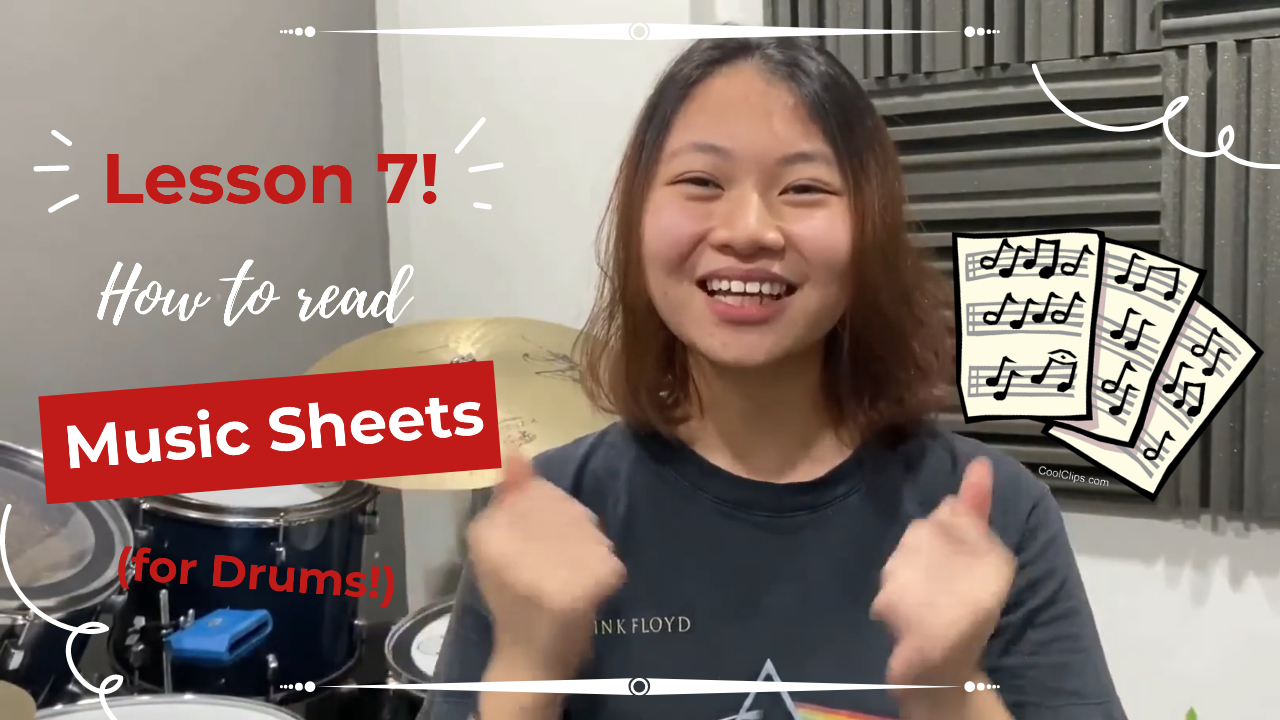KGMA’S PRACTICAL DRUMMING GUIDE
Lesson 1: Drumming Postures
Welcome to KGMA’s Practical Drumming Guide! We have made this series so that you can get to learn useful drumming tips and techniques that every drummer needs to know!
In this lesson we will cover the basic necessities that you will need to know when you take your first step towards becoming a drummer. Let us guide you through your journey of drumming!
There are three basic things a drummer needs to know: Sitting upright, setting the right height of your drum stool and relaxing your arms.
PROPER POSTURE
It's important to have the right posture and it is the most fundamental basis of being a drummer. Having a good posture reflects our mood and confidence level. It may seem like a basic thing to do, but trust me it matters.
SIT UPRIGHT
Sitting with a slouch while drumming for extended periods of time may inflict extra wear and tear on joints and ligaments. This will cause extreme damage to your back in the long run. You will also notice that professional drummers all sit up straight when they are drumming, so stop for a second and observe the way you are sitting!
If you notice that you are slouching, try your hardest to sit up straight on the drum stool. Resist the temptations to slouch, it'll improve your drumming dramatically and it will be more comfortable too! It might take a while to get used to, but it will be worth it in the long run.
slouching - bad posture when drumming
sitting upright - good posture when drumming
SETTING THE RIGHT HEIGHT FOR YOUR STOOL
It is not only important to keep your back straight, but setting the right height for your drum stool is equally as important as well. Setting the height of the stool too high might not let you reach the foot pedal, and setting it too low might not let you step onto the pedal properly. Your feet should reach the pedals and be placed comfortably on it.
Make sure your knees are at the right angle of 90 to 110 degrees.
Appropriate drum stool height and knee angle for better drumming
RELAXING YOUR ARMS
Once you have set your upper and lower body posture correctly, concentrate on your arms. If you find yourself having sore arms after hitting the drums, it is probably because you were feeling tense or gripping the sticks too tightly.
Now, the key to hitting the drums properly is by relaxing your arms, loosening your arm muscles and keeping your arms low as you hit the drums, letting the drum sticks bounce freely.
If you are too tense, you might hurt your arm muscles and will not have energy to carry on drumming.
A tense grip on the drumstick
A more natural and relaxed grip on the drumstick for greater flexibility.
After reading all of this, hopefully you will be able to apply them to your daily drumming. A good posture is the start to good drumming. Carry on and keep practicing!











































